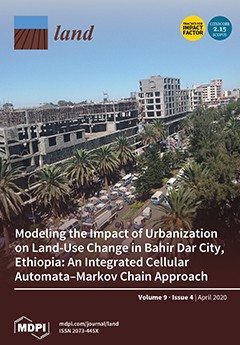Various sectors of stakeholders (urban, agricultural, policymakers, etc.) are frequently engaged in participatory research projects aimed at improving water resources’ sustainability. However, a process for comprehensive and integrative identification, classification, and engagement of all types of water stakeholders for a region or river
[...] Read more.
Various sectors of stakeholders (urban, agricultural, policymakers, etc.) are frequently engaged in participatory research projects aimed at improving water resources’ sustainability. However, a process for comprehensive and integrative identification, classification, and engagement of all types of water stakeholders for a region or river basin, especially in a transboundary context, is missing for water resources research projects. Our objective was to develop a systematic approach to identifying and classifying water stakeholders, and engage them in a discussion of water futures, as a foundation for a participatory modeling research project to address the wicked water resource problems of the Middle Rio Grande basin on the U.S./Mexico border. This part of the Rio Grande basin can be characterized as having limited and dwindling supplies of water, increasing demands for water from multiple sectors, and a segmented governance system spanning two U.S. states and two countries. These challenges are being exacerbated by climate change; a transitioning agriculture to more water demanding, high value crops; urbanization; and growing demand for environmental services. Moving forward, a core question for this region is
how can water be managed so that the three competing sectors—agricultural, urban, and environmental—can realize a sustainable future in this challenged water system? We identified the major water-using sectors who represent competing demands as including agricultural, municipal, self-supplied industrial users, environmental, and a sector we labeled “social justice”, comprised of individuals who lack access to potable water, or who represent groups who advocate for access to water. We included stakeholders from both the U.S. and Mexico, which is seldom done, who share transboundary water resources in the region. We hosted a series of stakeholder dialogues and obtained results that identified and described their vision for the future of water; challenges to be overcome; and important research questions that could be addressed using participatory modeling approaches. Four broad themes common to multiple sectors emerged: (1) quantity, drought, and scarcity; (2) quality/salinization; (3) urbanization; and (4) conservation and sustainability. Each sector expressed distinctive views regarding the future of water. Agricultural stakeholders, in particular, had strong feelings of ownership of water rights as part of land ownership and a concomitant sense of threat to those water rights emanating from dwindling supplies and competing demands. The contribution of this work is a methodology for identifying, classifying, and engaging all types of stakeholders in the context of a research project, enabling us to compare and contrast views of different types of stakeholders. Heretofore, this has been accomplished in “bits and pieces”, but never comprehensively and holistically.
Full article





